Related Research Articles
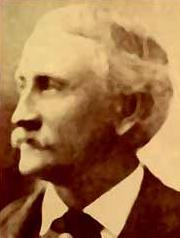
George Edwin Gard is one of only two men to have served as both police chief in Los Angeles, California, and sheriff of Los Angeles County, the other being William A. Hammel. He was the city's fourth chief, succeeding Henry King, and the county's 16th sheriff (1884–1886), succeeding Alvan T. Currier.
Thomas Jefferson Cuddy, known as T.J. Cuddy, nicknamed Tom, was a 19th-century police chief in Los Angeles, California, until bribery forced resignation, and member of the Los Angeles Common Council, the city's governing body. He served a six-month jail term for contempt of court.
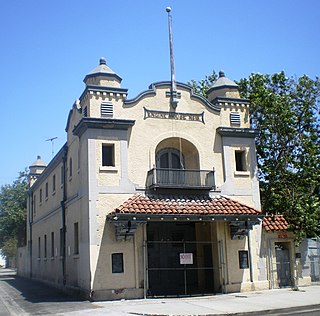
Engine House No. 18 is a fire station in the West Adams neighborhood of Los Angeles, California.

George P. McLain was a Civil War veteran, a covered-wagon pioneer and an advertising man who became a member of the Los Angeles, California, City Council at the turn of the 19th–20th centuries and was also on the Fire Commission in that city.

Walter Scott Moore was the president of the Los Angeles, California, Common Council in 1883–84 and chief engineer of the city's Fire Department at the turn of the 19th-20th centuries. He was ousted during an investigation into fraud in the department. He was the Republican candidate for California Secretary of State in 1886 and also ran for the state Senate.
Augustus or August Ulyard (1816–1900) was the first American-born professional baker in Los Angeles, California, after the 1850 U.S. statehood of California. In 1856–57, he was a member of the Common Council, which oversaw the governance of the young pueblo.

Wallace Woodworth was a wealthy businessman and rancher in Los Angeles County, California, United States, in the 19th century. He was a member of the governing bodies of both Los Angeles City and County. He helped organize the city's first gas company.

William Hayes Perry (1832–1906) was a 19th-century lumber merchant and financier in Los Angeles. He was known as "a masterful man whose influence and backing has been felt for fifty years in the development of Southern California."
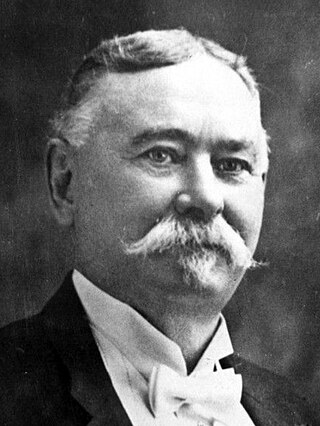
Levi Newton Breed was an active and early American participant in 19th Century California, where he helped organize Lassen County and was a member of the Los Angeles Common Council, the governing body of that city.
Frank R. Day (1853–1899) was an entrepreneur in Los Angeles and Monterey, California, in the late 19th century and was a member of the governing bodies of both cities. He was chief of the Los Angeles volunteer fire department.

Jacob Kuhrts original spelling Kuhrt), nicknamed "Uncle Jake", left home at age 12 as a cabin-boy on an English clipper and spent 6 years sailing around the world before he eventually disembarked in Monterey, California in 1848. He then spent several years working at the Mission Dolores in San Francisco prior to the discovery of Gold in Placer county when he worked as a miner during the California Gold Rush. Later after travelling south to the small pueblo of Los Angeles around 1859 when the town had a population of less than 5,000, he became active as a teamster, a merchant, Los Angeles County Coroner (1870–1873),the first volunteer Fire Commissioner Chief in Los Angeles (1886–1900), and as a member of the Los Angeles City Council from 1876 to 1877 and again in 1880 when he served as council president. He had the first 2-story brick building constructed in downtown Los Angeles which also served as the family compound, retail store, and upstairs rental units.
John Lovell was a 19th-century businessman in Los Angeles, California, the owner of a grocery store and other property and a member of the Los Angeles Common Council, the governing body of the city. He suffered injuries to his head, was sent to a mental hospital and was said to have epilepsy.

Austin Conrad Shafer was a schoolteacher, property owner and real estate agent who served on the Los Angeles, California, Common Council, the legislative branch of the city, in the 19th century and was president of that city's school board.
Cyrus D. Willard (1830–1913) was a contractor and mason in 19th century Los Angeles, California. He also was a member of the Los Angeles Common Council and the Los Angeles County Grand Jury.
Joseph W. Wolfskill and Louis Wolfskill were brothers who were members of the Los Angeles, California, Common Council, the legislative arm of that city's government, between 1874 and 1884. They were landowner successors to their pioneer Southern California father, William Wolfskill.
Frank Richardson (1851–1938) was an English policeman. He joined the Birmingham City Police in 1873 as a constable third class. Within one year he was promoted to constable second class and one year later to constable first class. In 1878 he was promoted to sergeant within the same force, and in 1882 he applied to be chief constable of Hereford, Herefordshire and was successful. He remained in this post, receiving the King's Police Coronation Medal in 1912 and being decorated at Buckingham Palace in 1917. He was at that time the "Most Senior Chief Constable of England" He had married in 1870 and had nine children of which seven were sons with only one not joining the police service. In total he and his family provided 176 years service to the constabularies of England and South Africa. Between 1903 and 1920 there were three Chief Constable Richardsons in office. He was also the chief fire brigade officer of Hereford, adding many innovations to the fire service.
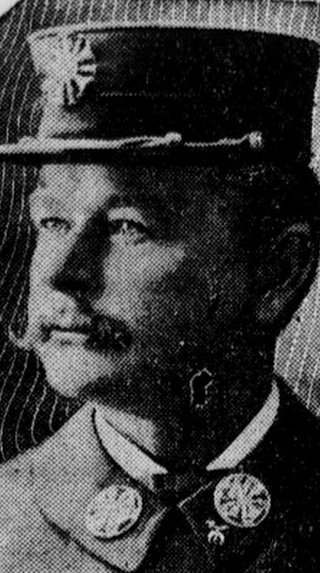
Thomas Strohm (1846–1929) was fire chief of the city of Los Angeles for three separate terms between 1887 and 1905 as well as a Los Angeles City Council member during 1892–94. He was denied a city pension although he had been injured on the job. Strohm also began a company that later became the Shasta Water Company.
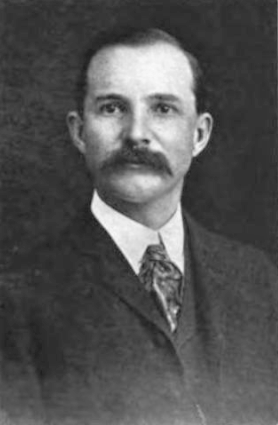
Walter F. Haas was the city attorney of Los Angeles, California. He was an authority on water and riparian water rights.

James Simpson Conwell was a businessman, inventor and local politician in Illinois and California.
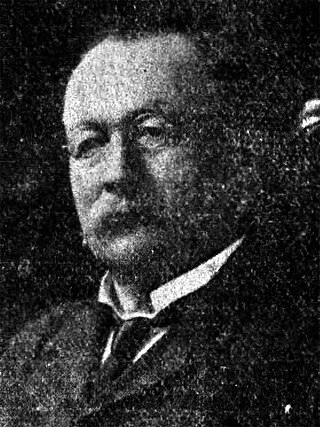
Jacob Frankenfield was an American businessman and politician who served in the Minnesota Senate from 1874 to 1875 and Los Angeles City Council from 1885 to 1890. He was the President of the Los Angeles City Council for a year, and during his tenure helped with the building of the Los Angeles City Hall and helped change the name of Fort Street to Broadway.
References
- Access to the Los Angeles Times links may require the use of a library card.
- 1 2 3 "Brutal Assault: Made by James Velsir on his Ex-Wife," Los Angeles Times; August 24, 1889, page 3.
- ↑ Proceedings of the M.W. Grand Lodge of Free and Accepted Masons of the State of California
- ↑ "James Velsir: Before Judge Owens for Abusing His Wife," Los Angeles Times, August 29, 1889
- ↑ J.M. Fulton, autobiography, Central Pacific Railroad Photographic History Museum,1930
- ↑ "Around the Depot," Los Angeles Times, April 15, 1882, page 3
- ↑ "Matters: of the City Council Yesterday" (incomplete headline), Los Angeles Times, January 18, 1885, page 3
- 1 2 "Punished A Fireman," Los Angeles Times, March 2, 1899, page 10
- ↑ "At the City Hall: Fireman Suspended," Los Angeles Times, July 19, 1900, page I-10
- ↑ "No Longer a Fireman," Los Angeles Times, August 9, 1900, page I-10
- ↑ "Alosta: Latest Notes From the New Azusa Town," Los Angeles Times, April 29, 1887
- ↑ "The Courts: New Cases," Los Angeles Times, January 25, 1889, page 3
- ↑ Chronological Record of Los Angeles City Officials,1850–1938, compiled under direction of Municipal Reference Library, City Hall, Los Angeles (March 1938, reprinted 1966). "Prepared ... as a report on Project No. SA 3123-5703-6077-8121-9900 conducted under the auspices of the Works Progress Administration."
- ↑ "City Council: Continuation of the Attack Upon the Chief of Police," Los Angeles Times, March 11, 1885, page 3
- ↑ "Briefs," Los Angeles Times, April 29, 1885, page 1